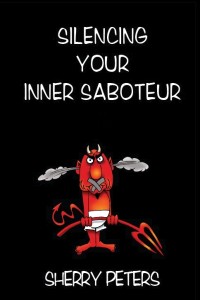We all set writing goals, but being able to achieve them means we need to understand how we work and how to make our goals work. Here are seven things I find helpful:
1) dress properly
You don’t wear a winter parks in +40 weather so why would you wear the editor’s hat when creative juices are running high? Stay immersed in your world and tell the story. Story structure, world building issues, exposition issues, line edits – all these ‘imperfections’ should be dealt with in the revision and final editing stages.
2) flip flops or hiking boots?
Do you get a better work out strolling on a beach or hiking up a steep mountain? Or a little of both like setting a large goal of one novel a year with smaller goals of 2,000 words a week? Know what motivates you and know that there is much flexibility in how you reach your goals. For example, you may only be able to write a few hundred words a day but if you set aside a weekend every month or two as a writing weekend, you can more easily reach your goals.
3) befriend change
Life happens. Rethinking a concept happens. Writer’s block happens. We get thrown off our goals and every doubt we ever had about being a writer sets in. So never cower before change. Understand why the change has happened. If it’s writer’s block, perhaps there’s something you haven’t thought through well enough. Sometimes our characters take the story in a different direction and we must rethink it. Illness strikes, work changes, any number of things can happen to throw us off our goal. And as with point #2, you may need to decide if it’s time to wear flip flops or hiking boots for a while. But remember, befriending change isn’t permission to procrastinate because goals, like business plans, are moving targets.
4) become a guru
When you are at your paying job, you aren’t in a position to write your story. Conversely, teach yourself and others that your writing time is a job not to be interrupted. Eliminate distractions like phones, emails and social media. You need to focus and to be in your groove, so become your own guru and facilitate channeling your own creativity. Our brains like routine so find something that works for you: meditate, choose background music that inspires creativity, have a special cup of tea and set a specific time for writing.
5) even a sloth is accomplishes something
We write about life, not directly perhaps, but all we experience and observe is translated into our stories. The themes in our stories are our ruminations about how we see and understand things. When telling a story, we sometimes need to pause and to consciously or subconsciously think through those themes and their implications. Down time can be problem solving time and sometimes, it’s just a need to recharge your batteries for the next burst of creative energy.
6) let your fingers do the talking
Fingers on key board – need we say more? Yes for what happens when the fingers and brain aren’t quite connecting? Try it the old fashioned way for a bit and use a pen and paper. There is something to be said for the older, slower method of writing. The hand and brain connect at a different speed (generally slower) and there something more methodical, more organic about the process. Sometimes when I do this, I write about things unrelated to the story but which, on some level, I needed to say or think about. Free style writing, whether by hand or keyboard, can loosen writing blocks and free up creative energy. But truly, write your story one paragraph at a time, one chapter at a time and soon, you’ll have reached your goal. If you’re not trying, it isn’t happening.
7) go play!
Life happens and we need it to happen. We are complex creatures needing inspiration, family and friends. So make time to play with others – and to do the dishes! Never feel guilty about having to do so unless you let it shamelessly distract you from your goal. Writing time for many of us is a form of play time so embrace it as such. For many of us, writing is play time for our creative spirit. Embrace it. Love it. In doing so, you’ll make those around you understand how important it is for you, the creative artist, to have this time. Your writing goals will be more easily met if your family and your creative spirit in you aren’t neglected.
Permission to play! Now, that sounds like fun!




 Be sure to read
Be sure to read 